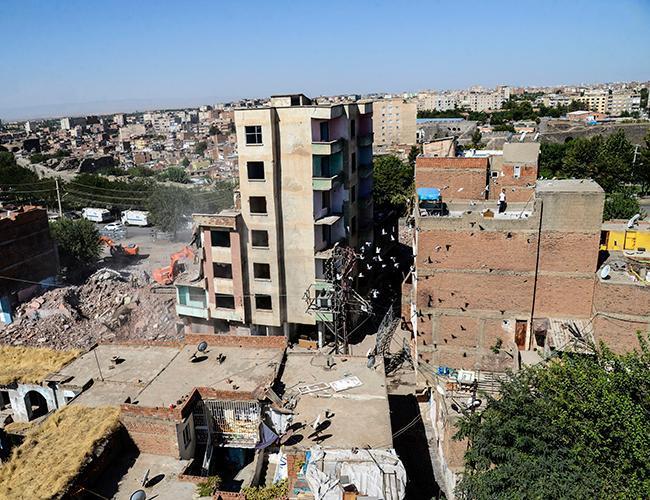
‘Infidel Quarter’ by Mıgırdiç Margosyan, translated by Matthew Chovanec (Aras, 112 pages, 35 TL)
Much of the Sur district in the southeastern city of Diyarbakır was flattened in recent clashes between Turkish security forces and Kurdish militants. Buildings in the old quarter of the city were turned to rubble and historic monuments were irreparably damaged between November 2015 and March 2016. The 16th century Armenian Surp Giragos church in Sur suffered badly and now stands abandoned.
 Back in 2011 the church had been reopened amid much fanfare after a beautiful restoration. Almost no Armenians are left in the city, but for many locals the church symbolized Diyarbakır’s rich multicultural past. A taste of that history is given in “Infidel Quarter” by Mıgırdiç Margosyan, who grew up as one of the few remaining Armenians in Diyarbakır’s Hançepek neighborhood in the 1940s and 50s.
Back in 2011 the church had been reopened amid much fanfare after a beautiful restoration. Almost no Armenians are left in the city, but for many locals the church symbolized Diyarbakır’s rich multicultural past. A taste of that history is given in “Infidel Quarter” by Mıgırdiç Margosyan, who grew up as one of the few remaining Armenians in Diyarbakır’s Hançepek neighborhood in the 1940s and 50s.
The book was first written in Armenian in 1988 before being translated into Turkish in 1992 and Kurdish in 1999. This English edition is the first English-language title to be published by Aras, a feisty Istanbul-based publishing house that has been a window into Armenian literature since its founding in 1993. It is a charming, poignant collection of 11 stories and autobiographical reflections.
The style of the writing is direct and colloquial, giving the sense of a traditional local tale-teller holding court. Stories link from one to the next and the same characters reappear across multiple pieces. Some of the stories seem fictionalized, some are direct memoir. An Anatolian Babel emerges from the pages, with characters having daily conversations in three languages.
But while the multicultural tapestry seems appealing, fierce conservatism is never far from the surface. Interactions between Christian Armenians and Sunni Muslim Kurds are rare, though rarely hostile. Decades after the catastrophe of 1915, Armenians remain introverted. Allusions to that cataclysm are light but striking, references to widows whose “husbands and sons were lost in the war.” The local lifestyles remind the reader that such conservatism is as much to do with regional culture as it is to do with Islam. Diyarbakır’s Armenians were apparently just as keen as its Muslims for women to have as many children as possible, praying that those they do have are boys.
“Infidel Quarter” contains plenty of wry humor. “Where we’re from, if a guy really liked a girl, they said he was ‘struck.’ I was struck by Tumas’ daughter. And what a strike it was!” writes the narrator of “Tumas’ Daughter, lamenting how his first adolescent love was sacrificed to tradition and custom. A later story quips that “villagers love to bargain so much that if you gave them something for free, they’d want you to pay them some for it.”
Deaths, graves and births punctuate local life. All 11 pieces are written with a poignant sense of looking back nostalgically at childhood. Adding to the poignancy are the photos of Sur interwoven throughout the book, taken at various points throughout the 20th century. Among the key themes is the idea of the loss of innocence, as the narrator remembers key moments growing up. “How Happy are the Poor” is a touching loss of innocence story, told through the eyes of a child watching the roof of his makeshift house collapse during a storm.
“Infidel Quarter” was first published in the early 1990s. Margosyan was nostalgically remembering a sepia-tinged childhood at a time when the area was descending into the nadir of conflict between Turkish security forces and the PKK. Today, at yet another grim time, the book again makes for a moving read.
* Follow the Turkey Book Talk podcast via iTunes here, Stitcher here, Podbean here, or Facebook here, or Twitter here.